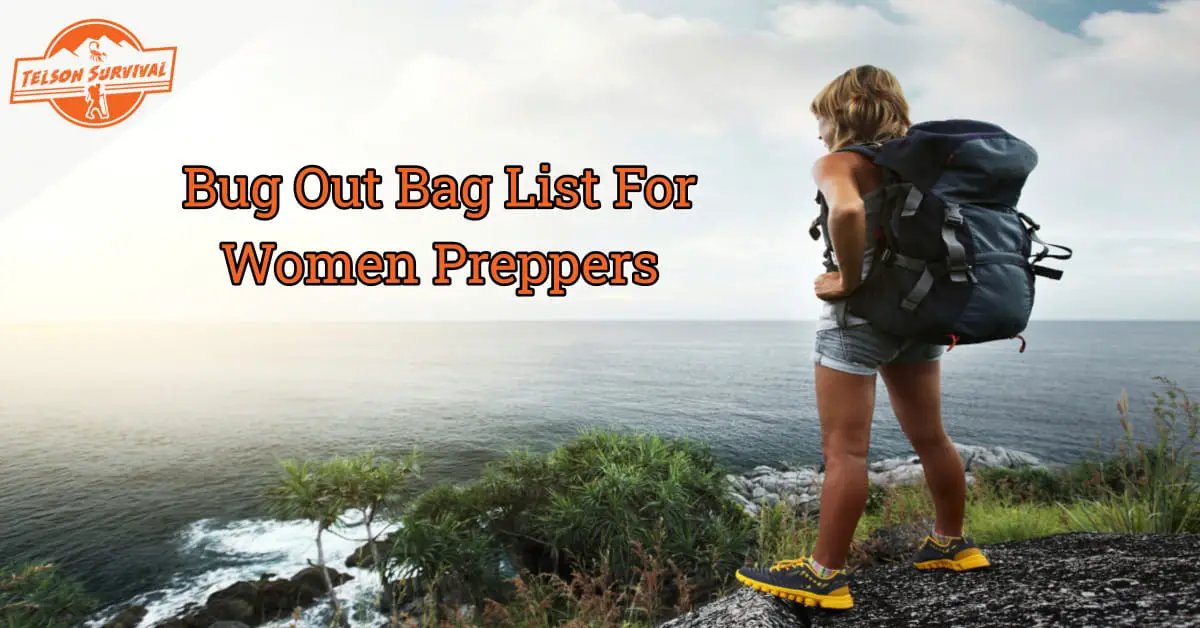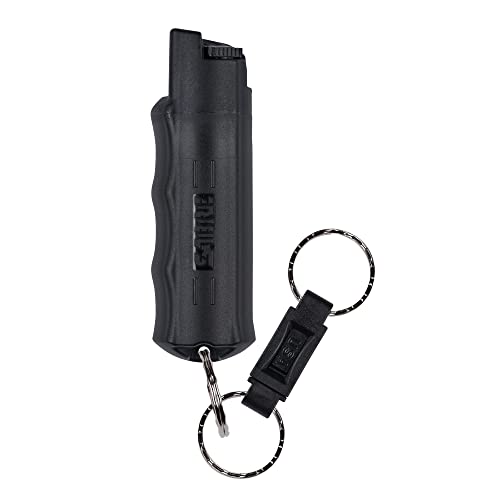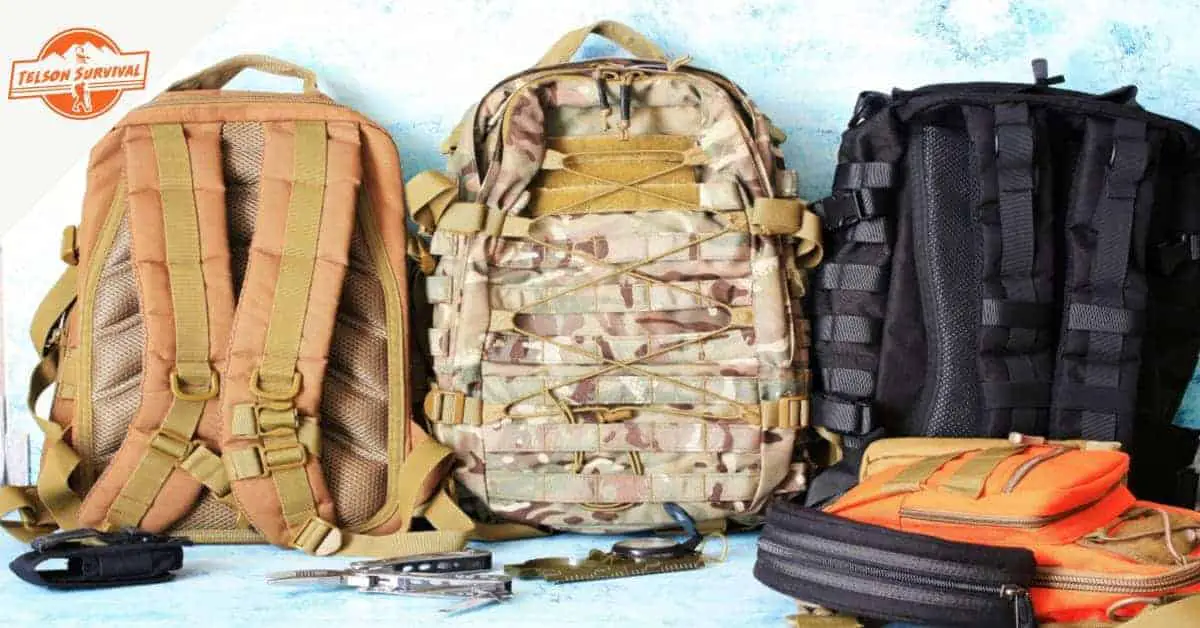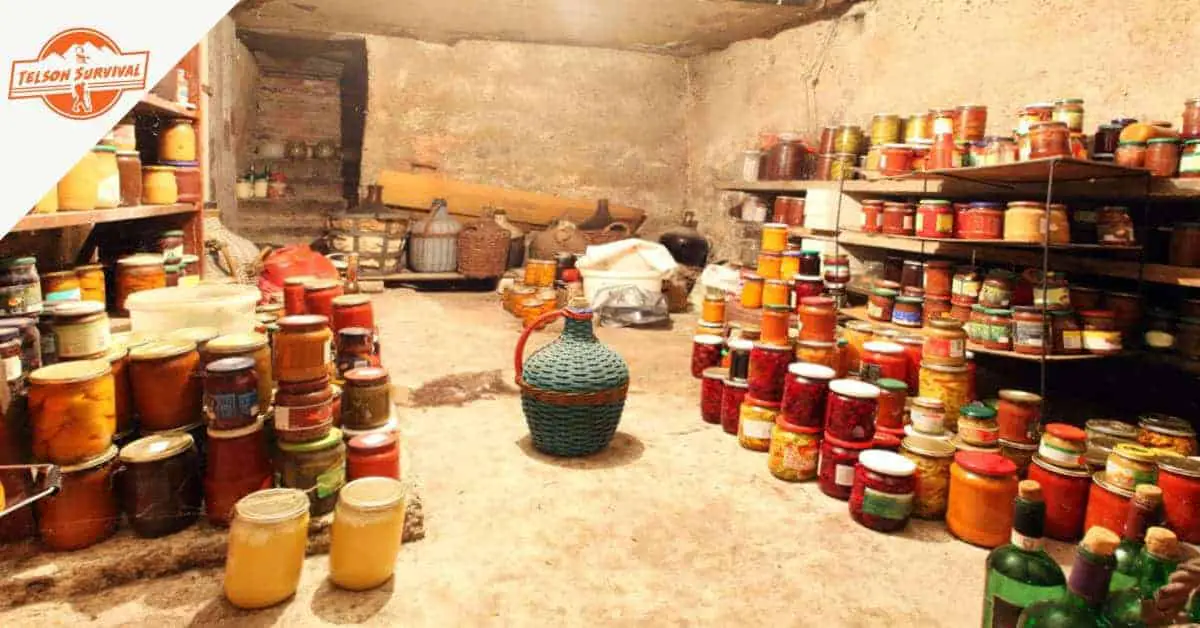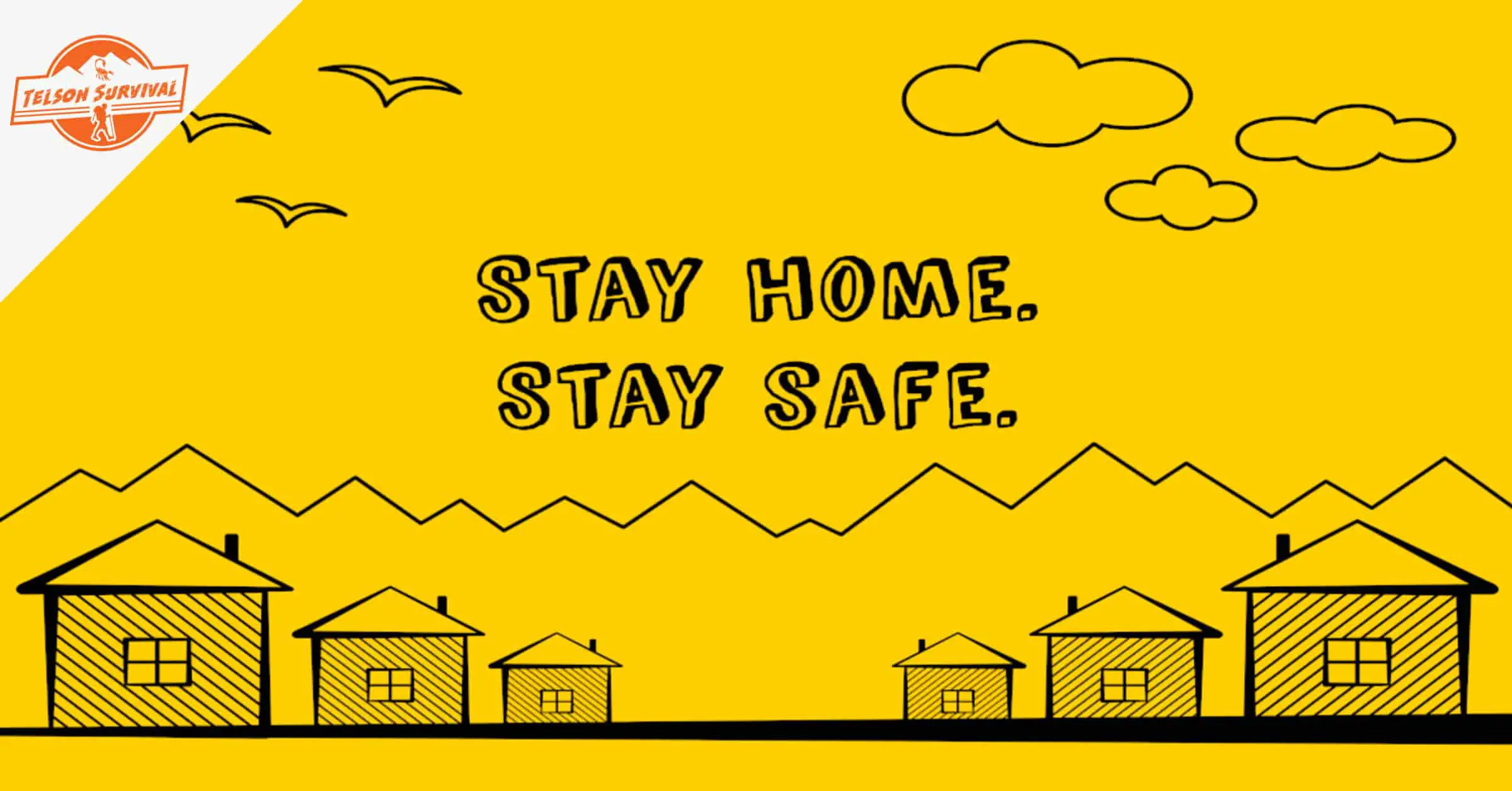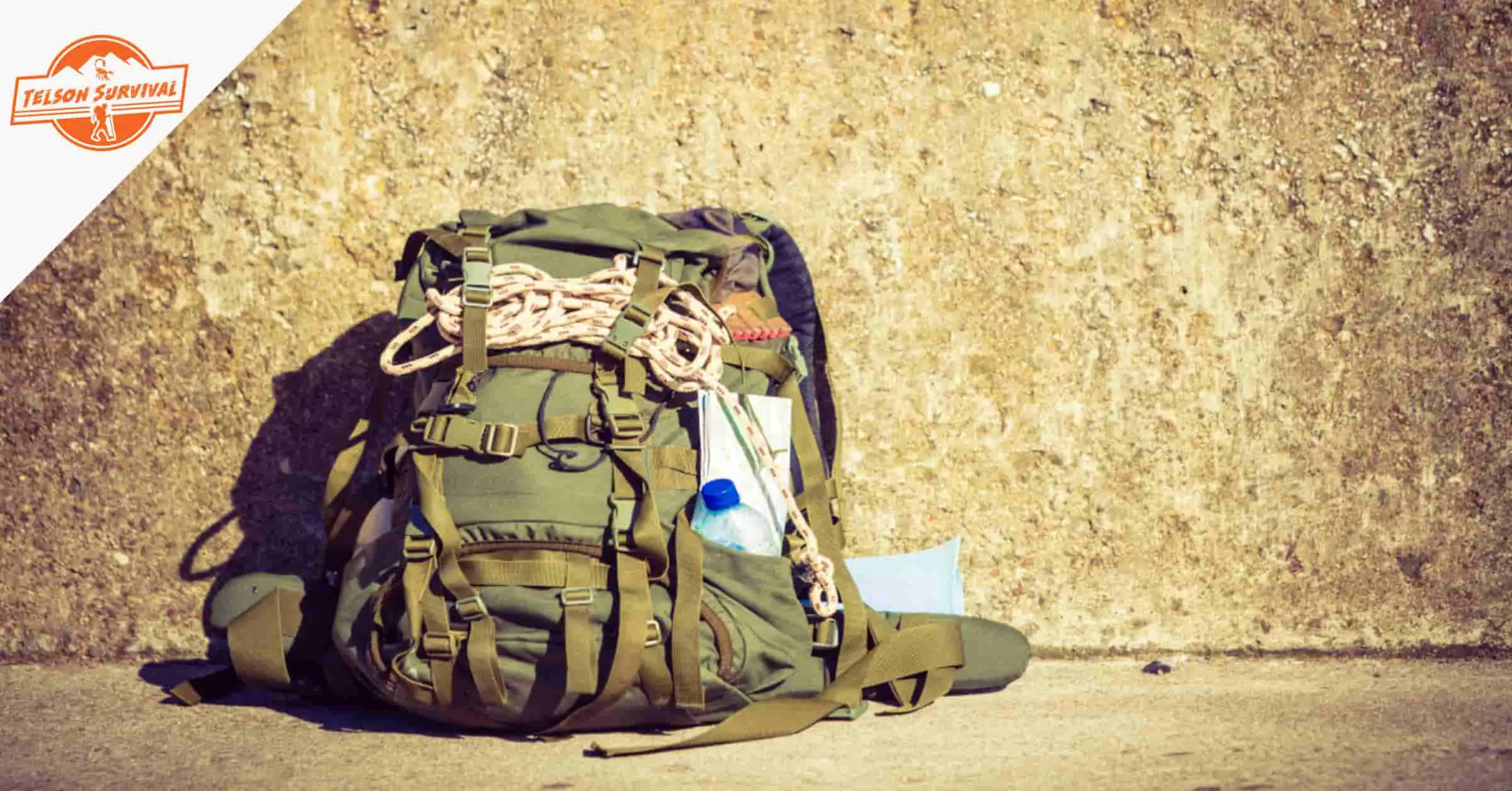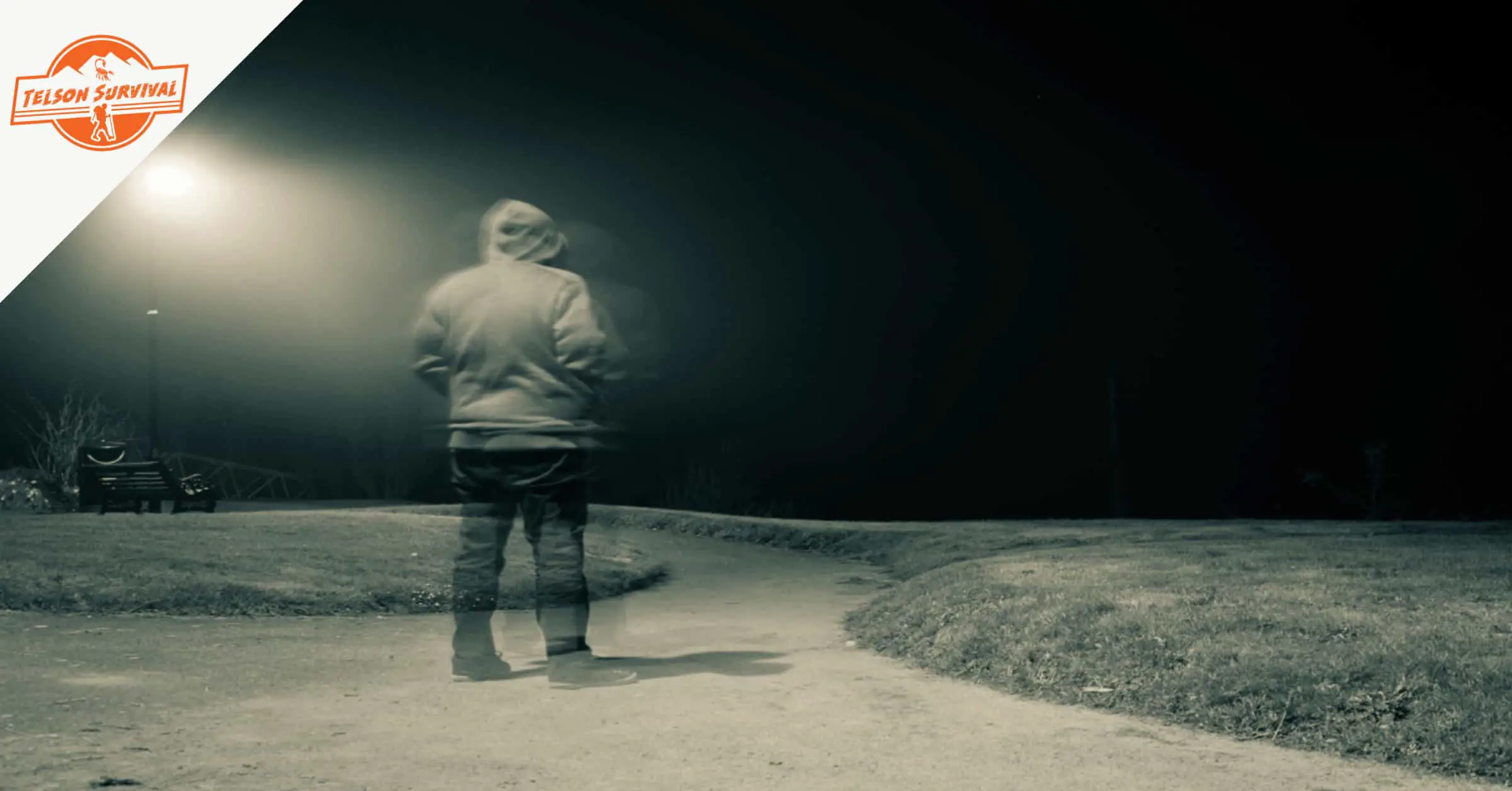Prepping for survival has no gender. And hey, don’t get me wrong. When SHTF, the extreme conditions threatening your survival aren’t going to be doing a gender count: “women here, men there.” But yes, your bug out bag will need to have a feminine touch if you are a woman prepper.
The best women bug out bag list includes personal protective equipment (PPE), food and water, survival shelter and protection gear, self-defense gear, and a first aid kit. But a good woman’s bug out bag has a feminine touch in the sanitation and hygiene items and the weather-appropriate clothing.
Giving a feminine touch to your bug out bag doesn’t have to be a hassle, and a woman’s survival bag can be made to make a disaster situation less stressful. This article will give you survival tips and gear suggestions to make your prepping easier and thorough at the same time.
Here’s what you expect to read about.
- Why a woman’s emergency kit is different from a man’s.
- How to put together a woman’s emergency kit.
- Women's Bug Out Bag List (including the best bug out backpack and female bug out bag gear).
Why a Women's Emergency Kit is Different from a Man's
It’s no secret that the disaster prepping world is male-dominated. Most disaster preparedness sites are created from the masculine ‘lone wolf’ and self-protection approach.
These sites have plenty of discussions around firearms and ammo and little about stuff related to staying hygienically safe during a disaster, which can’t be ignored by a woman prepper.
The majorly masculine approach to prepping can be intimidating for women whose physical makeup and mental wiring work differently.
Some women preppers may even feel like they are obliged to have a macho mindset, wear male clothing, and have male-appropriate gear and everything masculine in order to fit.
But, should a woman’s emergency kit be different from a man’s? The yes is resounding, and here are 2 reasons why a lady’s emergency kit should differ from a man’s:
- Women are physically less robust than men.
- Women have gender-specific needs that men don’t.
Women are Physically Less Robust than Men
No, no! That’s not an admission of weakness, it is a fact! Men are physically stronger than women. What that practically means is that men can carry heavier bag out bags than women.
Even though the rule of thumb for a backpack is the same for both men and women: “Do not carry more than ¼ load of your weight,” women have generally lower body weight than men and will have to carry lighter loads when SHTF.
Women have gender-specific needs that men don’t
Women are made biologically different from men. As such, they have a lot more details to take care of when it comes to hygiene.
A man can keep their underwear for two days in the wild and still be good, but that may not work for a woman, especially if she is in her menstruation days.
Such a difference already means extra inner-wear and sanitary provisions that a man won’t need in their emergency kit.
How to Put Together a Woman’s Survival Kit
Putting together a survival kit is a process that is not realized in a single day but should, nonetheless, be completed soonest because no one knows when disaster will strike.
Here’s how you put together a woman’s survival kit:
- Start by purchasing all the provisions for the kit. We’ll give you a comprehensive list of what you need to procure in the next section.
- Buy a backpack that’s the right size and fits your frame. Backpacks are measured in liters and the average most used size is the 40-liter backpack. You should measure your hip and torso length to determine your frame and buy a backpack that fits your frame. Doing so is crucial in ensuring your backpack weight is evenly distributed and doesn’t feel uncomfortable on your back. We’ll tell you in a while what the best bug out backpack for women is.
- Optimize your backpack for easy use of items and do proper weight distribution by using the following order of packing your stuff:
- Pack first the big but soft items at the bottom of the backpack (tent/tarp, sleeping bag, a change of clothing, etc.). These will also give a stable base to your bag.
- Cooking ware and food that you’ll not need to remove while you are on the go should go in the middle (canned food, pots, stove, etc.). Putting the heavier stuff in the middle makes your backpack feel lighter.
- Any items you’ll need often go to the top (rain jacket/coat, water supply, tissue paper, pain killer meds, etc.).
- Any items that are used often or will need to be drawn quickly should go to the external backpack pockets (pepper sprays, maps, compass, water bottle, phone, etc.
- Avoid hanging items with extra weight on your backpack as that unbalances the weight and makes carrying and walking difficult. If you have tent poles, rope, or other stuff that can’t go into the bag, fasten it to the backpack in a balanced manner.
- Use these good bug out bag packing tips:
- Use a scale to weigh every item you put into the survival kit. This will help you stay within the recommended quarter of your body weight.
- Use weight cutting-tricks like removing wrappers from products, using Ziploc bags to carry stuff like medicine instead of the package bottles, cutting map edges, removing covers from guide books, and using lighter alternatives like tooth brushing powder instead of toothpaste among others.
- Ensure everything is tightly packed as that reduces wobbling and shifting of stuff in your bag and makes carrying and walking more comfortable.
Women's Bug Out Bag List: Best Female Bug Out Bag Gear
There are basic items that should go to a bug out bag. But a woman’s survival bag will have some extra and specific items that may not be in a man’s bag out bag.
We’ll give you a list of the basic bug out bag gear together with the female-specific gear and also tell you what the best bug out backpack to carry the survival gear is.
Best Bug out Backpack for Women
The best bug out backpack should provide the best packing and carrying conditions. As such, it should be sturdy, comfortable, roomy, and versatile as well as have the right comfortably fitting size for your torso and hip length.
If you are not sure about the right size, you can check the bag’s measurements against these suggestions before making an order:
- For large torsos of 20ʺ and more – go for Large size bags.
- For torsos between 18ʺ and 19.5ʺ - go for Medium size backpacks.
- For torsos between 16ʺ and 17.5ʺ - go for Small size backpacks.
- For torsos of 15.5ʺ - go for X-small backpacks.
Overall, we propose that the best bug out backpack for women is the REEBOW GEAR Military Tactical Backpack. As a second choice, consider the 5.11 Tactical RUSH24 Military Backpack.
Both are made of water-proof material, have a reinforced grab-and-go handle, and have external pockets for a lady’s fast-reach hygiene and emergency items.
As a difference, the REEBOW gives you 40L of capacity in a 20ʺ bag while the 5.11 Tactical RUSH has 37L in a 20ʺ bag.
Last update on 2024-11-30 / Affiliate Links / Images from Amazon Product Advertising API
When disaster strikes, no one really knows how long it’s going to last. So, building a bug out bag with provisions that can last you at least 72 hours is advised.
A woman’s bug out bag should include the basic survival items plus the best female gear, all of which fall under the following categories.
Personal Protective Equipment (PPE)
The stubborn Coronavirus pandemic has inscribed in everyone’s brain that staying safe from viral and other infections requires some personal effort.
In a disaster, these 3 pieces of protective equipment are especially essential for a woman prepper:
- Facial protective mask
- Safety goggles
- Hand gloves
Protective Masks
Protective facial masks will help you to steer clear of viral infections and avoid infecting others as well.
Since disaster situations may not provide the occasion for cleaning a reusable mask, we recommend you include a few disposable surgical masks and a couple of more efficient disposable options such as the N95 (filters 95% germs).
Last update on 2024-11-30 / Affiliate Links / Images from Amazon Product Advertising API
Always remember to wear, use, and dispose of masks correctly to optimize their protective purpose.
Safety Glasses/Goggles
Tears and eye cavities can bring viruses to the respiratory system. Wearing safety glasses/goggles is a great protective measure unless you can go for the more complex full-face respirator. However, a respirator comes with issues of space and weight.
No products found.
Hand Gloves
Especially if you are bugging out following a natural disaster, contamination is very likely. Hand gloves will ensure safety from contaminated hands.
Basic and Female-specific Sanitation and Hygiene Items
There are basic hygiene items that everyone will need to have in their emergency bag. Women preppers need to add a few more feminine hygiene items into their bug out bags.
We list some basic hygiene survival items and discuss a few feminine hygiene details that you should give more detail to.
Basic sanitation and hygiene items
- Toilet paper – remove the cardboard tube for easier packing and less weight.
- Facial tissues – consider removing from box and carrying with a Ziploc bag.
- Soap – you could consider bathing wipes in case water is not available.
- Shampoo and conditioner – consider a conditioning shampoo to reduce weight.
- Oral hygiene items – consider tooth powder instead of toothpaste and carry it in a Ziploc bag in place of the original packaging.
- Towel – Consider the compressed disposable towels.
- Deodorant.
- Manicure & pedicure kit – extra-long and broken nails can be uncomfortable during an emergency. Consider a light manicure (3oz to 4oz) instead of prepping with single pieces.
- Hand sanitizers (go for hand wipes rather than liquids).
- Comb/Brush – Consider a folding hairbrush with a mirror.
- Diapers, wipes, and baby stuff (if you have a baby).
Feminine menstrual hygiene products
The most common menstrual hygiene products are sanitary pads. You’ll, however, need to pack plenty of these, and that means additional weight and reduced space in your bug out bag.
Sanitary pads and tampons have other disadvantages: You’ll also need to bring along disposal bags and you have to change them often.
Consider using the menstrual cup. One advantage with this option is that you can wear the cup for up to 12 hours then simply remove, empty, clean, and place it back. Also, one cup can last you up to five years, which means a pair is good enough in your survival bag.
Our best pick is the Lena Menstrual Cup and you could also opt for the Diva Cup for a few more bucks. Both come in sizes and you can choose depending on your age, the intensity of flow, and experience of use.
Last update on 2024-11-30 / Affiliate Links / Images from Amazon Product Advertising API
Note that you could also opt for the disposable Menstrual Discs which work in a similar way as the cup.
However, even though menstrual disks take up less space, they match the sanitary pads and tampons in that they are disposable and you’ll need to bring a good number of them.
First Aid Kit
Consider creating your own first aid kit with basic medical supplies and those that respond to your medical needs and situation.
Basic medical supplies
- Pain and fever relieving drugs (Ibuprofen, Paracetamol, Acetaminophen, etc).
- Antihistamine in case you develop an allergic reaction.
- Anti-diarrhea drugs.
- Antibiotics for bacterial infections. You’ll need a prescription for these from your doctor.
- Antibiotic cream to preempt infection on cuts.
- Burn cream.
- Elastic and wound bandages.
- Gauze.
- Surgical gloves.
- Sticky tape.
- Safety pins.
- Non-digital thermometer.
- Suture kit.
- Tourniquet (to stop bleeding).
Personalized medical supplies
- UTI pessaries for women (it’s always advisable to have some on you).
- Any chronic disease meds, doctor-advised supplements, or health equipment that you use regularly (inhalers, blood pressure meds, etc).
Food and Water
If you are prepping for a day’s food and water provision, a few packets of processed dried foods like crackers and a few high-energy bars will keep your energies going for a day. A gallon of water (around 4 x one-liter bottles) is recommended for the day.
However, a 72-hour or more bug out bag should contain a more substantial supply of food and water plus food preparation and water purification gear as listed here.
Food
Consider some of these according to your nutritional needs, taste, and carrying capacity.
- Canned food (meats, fruit, vegetables, fish, soup, juices, etc.).
- Freeze-dried vegetables (seaweed, beets, asparagus, potatoes, spinach, etc.).
- Powdered dried foods (powdered eggs, powdered milk, instant soup, powdered cheese, etc.).
- Dried fruit and nuts (plums, dates, cherries, raisins, mangoes, figs, peanuts, cashew nuts, etc.).
- Protein and fruit bars.
- High-energy foods (candy bars).
- Food for infants if present.
- MRE
Consider reducing your food weight by opting for MRE meals. These are military meals with a longer storage life and are high on calories and quite affordable. Consider those packed in pouches for easy carrying rather than those in pails.
Our two top options: Survival Tabs that are an 8-day supply of 96 emergency food tabs and are gluten-free and non-GMO, and the Wise Company Emergency Food Supply that offers a 60-serving supply of food that you prepare by simply adding water without needing to cook.
Last update on 2024-11-30 / Affiliate Links / Images from Amazon Product Advertising API
Food preparation gear
If you bring canned food or precooked stuff, you’ll need to warm those at some point. Also, 3 days of cold food and drinks may turn miserable, which explains the need for food preparation gear.
Last update on 2024-11-30 / Affiliate Links / Images from Amazon Product Advertising API
Water
A gallon of water per person per day will mean at least 3 gallons per person for 72 hours. To cut on weight, consider carrying your water in light-weight collapsible water bottles. These are reusable, less wide, and can be rolled up and carried in your bag with the possibility of refilling.
Water filter and purification tabs
Even with your water supply, it’s crucial to be prepared to access more water should your supply run out. Especially if normal water supplies are lacking or dysfunctional, a water filter or water purification tabs can save the day.
The best water filter has a low micron rating (below 0.2) which is an indication of its efficiency in eliminating microbes. We recommend the Sawyer MINI Water Filtration System which has a 0.1 micron rating and can filter up to 100,000 gallons.
Last update on 2024-11-30 / Affiliate Links / Images from Amazon Product Advertising API
If you go for water purification tabs, you should know that they will kill microbes but will not sieve the debris as the water filter will. But they are worth carrying along as a standby alternative. Consider the Potable Aqua Germicidal Water Purification Tablets which come as a twin pack of 50 water purifier tablets and make your water potable in 35 minutes.
Last update on 2024-11-30 / Affiliate Links / Images from Amazon Product Advertising API
Weather-appropriate Clothing
Women can be picky about clothing, but emergency situations don’t give that luxury. So, the most important thing is to have a set of change of clothes for every season since no one knows in what season Shit will Hit The Fan.
For your winter change, layering is crucial:
- Base layer clothing – Prepare thermal wool leggings and tops to help you stay dry and evaporate the moisture from your body when you sweat. Avoid cotton by all means because it gets wet and loses any thermal retention function.
- Middle layer clothing – Consider wool sweaters or vests to keep you insulated by retaining the warm air produced by your body. Women’s goose down jackets are also an optimum option as long as you don’t get them wet and they don’t make the entire weight of your survival bag.
- Shell/Outer layer clothing – These repel the elements like rain, snow, and wind. They should be breathable to avoid condensation buildup. They should also be big enough to house the other layers. Polyurethane-coated or laminated options are great.
- Headwear
- Gloves
- Thermal socks
- Boots
Last update on 2024-11-30 / Affiliate Links / Images from Amazon Product Advertising API
For your summer change, go for moisture-wicking options and ensure protection from sun rays:
For rainy weather, go for waterproof options:
- Raincoat or rain jacket (consider light options).
- Waterproof pants.
- Backpack waterproof cover. Ponchos are also a light option to protect you and your backpack.
Last update on 2024-11-30 / Affiliate Links / Images from Amazon Product Advertising API
Survival Shelter and Sleeping Gear
If you are in the open, some form of shelter will be opportune as well as sleeping gear. You’ll need to consider options that do not weigh too much and which can easily be attached (not hang) to your backpack.
Choose what suits you best among these bug out shelter and sleeping gear options:
- Tent – Tents are the best for protection from the elements when it comes to prepping for a bug out bag shelter option. But they can be bulky.Go for one that is weatherproof for wind and rain and has good ventilation. We recommend the Coleman Sundome Tent.
- Tarp – Opting for a tarp rather than a tent will save you plenty of extra weight. Tarps are also multifunctional and can be used as a stretcher or hammock, to collect water, or to send a rescue signal.
- Sleeping bags – These provide good insulation against the elements in any weather and will keep you warm or cool as needed. Go for a light-weight option without compromising quality like the Oaskys Camping Sleeping Bag.
- Bivy sacks – These are single-person bags that provide additional protection from the elements even while under a tent or tarp. They work like sleeping bags.
- Hammock – A hammock can be a great sleeping option for women especially because it keeps you off the ground. However, even though a hammock is quite light for carrying, it won’t have the best insulation. Like the tarp, though, you can use a hammock to harvest rainwater especially if your stock is running out. Go for one that can easily be fastened on a tree with paracord rather than one that’s designed to be used with a stand.
Last update on 2024-11-30 / Affiliate Links / Images from Amazon Product Advertising API
Self-defense Tools
Depending on the type of disaster that’s forcing you to bug out and the conditions under which you are bugging out, self-defense tools are a necessary gear to include in your bug out bag.
Self-defense tools can range from lethal options like guns and pistols to the temporarily maiming pocket knives, Taser guns, batons, or pepper sprays. But carrying them can also be limited by state rules.
We recommend you prep for self-defense with at least a good pepper spray. The SABRE RED Pepper Spray Keychain is an excellent choice as you can carry it as a keychain for quick access and deployment. It is camouflaged by its dark color and unsuspecting design.
Last update on 2024-11-30 / Affiliate Links / Images from Amazon Product Advertising API
Besides, you can use the SABRE pepper spray from a 10-foot distance and you have up to 25 releases. Its lightweight allows you to carry a pair or more in your survival kit.
Communication and Navigation Tools and Gadgets
Disaster situations often require you to communicate with family or with disaster and emergency agencies. Besides, survival in some disaster situations is dependent on receiving warnings or updates on the situation. Often, you’ll also need to find your way to designated rescue centers or other safe destinations.
Here are some of the survival communication and navigation gear a woman prepper should opt for:
- Smartphone – store an extra one in your bug out bag apart from the one you use daily and ensure it has all the contacts of people you may need to communicate to.
- Satellite phone – A satellite phone will cost you an arm and leg. But if you are the do-or-die female prepper and you won’t chance getting stuck anywhere for lack of communication, a satellite phone is a bang for the buck for a bug out bag.
- Compass.
- Maps.
- Whistles.
- Signaling mirror.
- Flares.
Last update on 2024-11-30 / Affiliate Links / Images from Amazon Product Advertising API
Other General Bug Out Tools
Personal and Family Documents
Original documents should always be stored in a safety box that you can grab and go in case of evacuation. But you can include copies of the originals in your bug out bag:
- Personal documents – Identification cards, passports, birth certificates, marriage certificates, driver’s license, social security cards, insurance policies, education certificates, etc.
- Medical documents (COVID-19 health log, current or continuing treatments, medical history, drug allergies, etc.).
- Emergency contact for family and disaster & emergency agencies.
- Legal documents (Will, business documents, trusts, etc.).
- Ownership documents (land deeds, house deeds, car title, etc.).
- Financial documents (bank accounts, passwords, etc.).
- Cheat sheets.
- Pet’s data if any.
Women's Bug Out Bag Conclusions
The woman prepper phenomenon is picking momentum. That means prepping guides should change the paradigm and include a feminine approach to prepping skills and prepping gear.
We’ve gone ahead and adopted this change of paradigm, which is why we’ve put together this Best Women's Bug out Bag List.
Now, you can have a tailored female prepper gear guide and get every detail you need to know about the best bug out backpack and the best female bug out bag gear. Look out for more!

